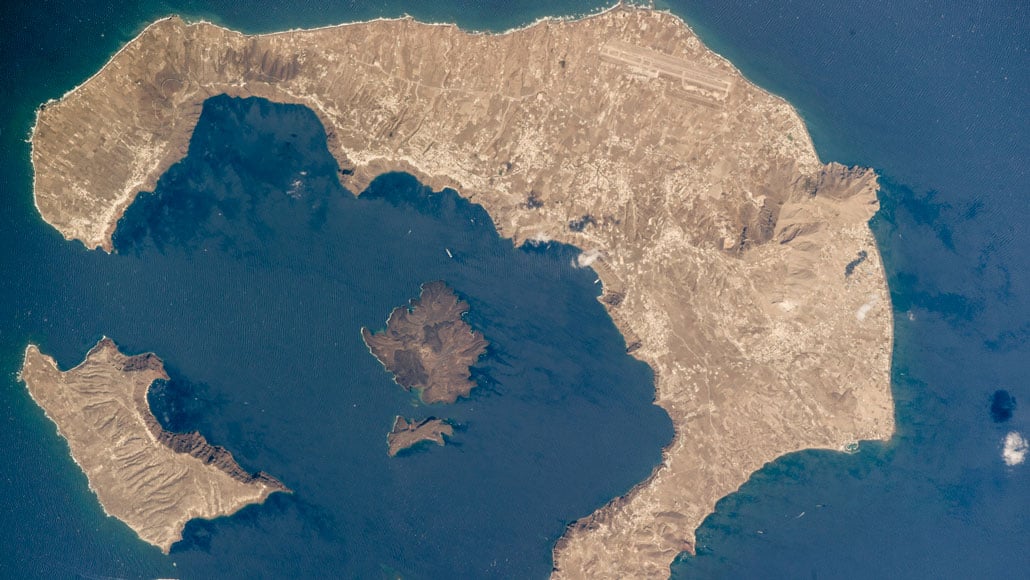Falling seas break your skin,
fabricated fractures feeding
flareups with deferred certainties
that linger in the tuff.
Wearing welts like a crown,
you proudly pronounce
the weathered wounds
of every fissured blow.
Peeling back your past
we scour through scars
with measured respect,
bearing them as witness
against the rising tides.
A sunken circle,
marked by the
protracted echo
of history repeating.

This poem is inspired by recent research, which has found that sea levels have affected volcanic eruptions on the Greek island of Santorini.
Santorini is a volcanic island in the Cyclades group of the Greek islands. It is the largest island of a small, circular archipelago, which is the remnant of a volcanic caldera, a large cauldron-like hollow that forms shortly after the emptying of a magma chamber in a volcanic eruption. The volcanic eruption (which is often referred to as the Minoan eruption) that formed the archipelago occurred just over three and a half thousand years ago and is one of the largest volcanic eruptions in recorded history, with the subsequent earthquakes and tsunamis likely leading to the collapse of the Minoan civilisation. The volcano is also known to have erupted many times before, although usually less explosively and in this new study, researchers have found that these eruptions were likely driven by falling sea levels.
Besides shaping history, the Minoan eruption exposed cliffs on the remaining islands, revealing an extraordinarily detailed history of its volcanic past. By comparing this eruption history to a high-resolution sea level record, the researchers in this study determined that 208 of the 211 eruptions that have occurred on Santorini over the past 360,000 years happened when sea levels were at least 40 metres below their current levels. Falling sea levels remove mass from the Earth’s crust, and the crust fractures as a result. These fractures then allow magma to rise to the surface, feeding eruptions, although there is a long delay between fracturing and eruption. These findings were confirmed with numerical modelling, which showed that when sea levels drop 40 metres or more below current levels, there is enough stress at the top of the magma chamber on Santorini for the Earth’s crust to fracture, thereby allowing magma to flow upwards. With over half of the world’s volcanoes either on islands or in coastal areas facing sea-level rise from global warming, further research is needed to understand what the sea level thresholds might be for other eruptions, and the potential implications for the millions of people who live on volcanic islands around the world.